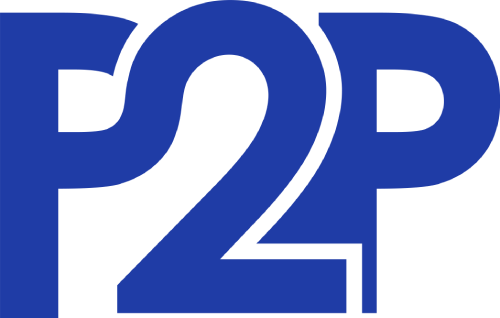What is team augmentation?
 Team augmentation is about hiring additional resources, usually as contractors, to supplement an existing internal team. These resources are integrated into the existing team's culture, workflow, and processes.
Team augmentation is about hiring additional resources, usually as contractors, to supplement an existing internal team. These resources are integrated into the existing team's culture, workflow, and processes.
Team augmentation can be an effective strategy to rapidly scale up the capabilities of your team, enhance productivity, and accomplish project objectives in a timely and efficient manner. Furthermore, it offers the flexibility to scale down quickly, avoiding the need for traditional layoffs.
How is it different than outsourcing?
Team augmentation involves hiring additional resources to join an internal team. These resources work alongside the existing team and are overseen by the internal team’s managers.
On the other hand, outsourcing involves hiring an external company to complete a project on behalf of the business. It is often used to leverage lower labor costs, access specialized skills, or free up internal resources for other critical projects. The resources are managed by the outsourcing company. You can read our blog post about outsourcing here.
Simply put, in a team augmentation model, you ‘bring resources to the project’ but in an outsourcing model, you ‘take the project to resources’.
How do you implement team augmentation?
There are two main options for implementing team augmentation: contracting independent freelancers or contracting resources from a service company.
Option 1: Contracting independent freelancers
For small-scale projects requiring three or fewer resources, contracting freelancers can offer a few benefits:
1) One advantage is the ability to evaluate a larger pool of candidates with the required expertise and choose the best talents for the job. This flexibility can result in a better outcome for your project.
2) Another advantage is that freelancers are often more cost-effective than hiring a service company because they don't have the same overhead costs associated with running a team of resources.
There are also potential downsides to hiring several independent freelancers for the job:
1) When a new group of individuals, who have not previously worked together, are hired into the same host team, they are likely to experience the different stages of Tuckman's team development model (forming, storming, norming, performing) in order to establish effective collaboration.
 Forming: Get to know each other, clarify roles & responsibilities.
Forming: Get to know each other, clarify roles & responsibilities.
Storming: Navigate conflicts, challenges, and disagreements.
Norming: Agree and establish norms for working together.
Performing: Work together effectively to deliver high-quality results.
This process typically takes from a few weeks to a few months, and the duration tends to increase with the number of new people added to the team. During this time, it may be difficult to ensure productivity, quality control and consistency across the project, especially if each freelancer has their own approach and style.
2) You will need to invest considerable time interviewing multiple candidates for each position.
3) One potential risk of hiring freelancers is that if they become unavailable for any reason (such as illness or unexpected absence), you will likely have to interview and hire a replacement, which would take time and requires repeating the interview and onboarding processes. Furthermore, you will lose productivity until a replacement is found.
Option 2: Contracting an existing team from a service company
 Another option for team augmentation is to work with a service company that has the required expertise, seeking out an existing team to supplement your internal team. This approach can be particularly beneficial if you are looking for multiple expertise and resources (e.g. four or more).
Another option for team augmentation is to work with a service company that has the required expertise, seeking out an existing team to supplement your internal team. This approach can be particularly beneficial if you are looking for multiple expertise and resources (e.g. four or more).
There are several advantages in working with a service provider:
1) By utilizing a service company, You can hire an existing team of experienced talents who have already worked together and are productive as a team. In other words, you can quickly ramp up your project.
2) Service companies typically have multiple resources with similar expertise, which provides greater flexibility if the individual assigned to your project becomes unavailable. They can quickly find a replacement resource or provide temporary coverage until a suitable replacement is found. This reduces the risk of delays or disruptions to your project timeline.
3) With service companies, you can typically get access to cutting-edge technology. Service companies often invest in the latest technology and tools to stay ahead of the curve.
There are also a number of downsides to hiring a service company:
- With the freelancer option, you typically get access to a broad pool of talents to choose from. However, with a service company approach your choices are limited to the employees of that specific service company.
- Service companies may charge slightly higher rates for their services compared to independent freelancers, as they incur overhead costs for project management and coordination.
Conclusion
The decision to hire freelancers or a service company ultimately depends on the specific needs and requirements of the project. Overall, we believe that for larger team augmentations (e.g. four or more), it may be more beneficial to hire a team from a service company. However, for smaller projects, utilizing the services of freelancers may be a more efficient approach.
There are several ways to find service companies, such as searching on social media platforms, particularly LinkedIn. However, if you require tech expertise, you can utilize Job Pairing's hiring marketplace platform (p2p.jobpairing.com) to connect with verified and vetted tech service companies. This platform streamlines the process of finding and hiring suitable service providers by offering a curated list of companies that match your specific requirements.

